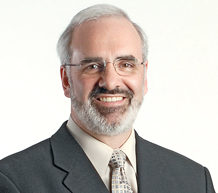
AMDA – The Society for Post-Acute and Long-Term Care Medicine, is recommending a “measured, stepwise approach” to resuming visitation and group activities in post-acute and long-term care settings while acknowledging gaps in clinical knowledge about COVID-19.
“Effective vaccines and therapeutics against COVID-19 are a significant step towards a post-pandemic world. A return to ‘normal,’ though, will not be immediate,” AMDA Executive Director Christopher E. Laxton, CAE, said in a Monday statement. Ongoing risks include vaccine delays, vaccine hesitancy, admission of new, unvaccinated residents, and community COVID-19 cases — requiring a thoughtful approach to re-opening, he said.
Much remains unknown about the effect and efficacy of COVID-19 vaccines and vaccination, the organization explained, including:
- The efficacy of COVID-19 vaccines among frail residents in post-acute and long-term care settings
- The degree to which vaccinated individuals may still shed and transmit SARS-CoV-2 virus
- The duration of vaccine protection
- The protection that COVID-19 vaccines provide against virus variants
- The proportion of individuals in the community and among staff who must be vaccinated to achieve effective herd immunity
With these questions in mind, AMDA recommends the following preliminary visitor guidance (fully detailed here):
- All staff, residents and visitors should be vaccinated against COVID-19 and seasonal influenza
- Visits with residents should be scheduled and supervised by facility staff
- All visitors should continue to be screened for COVID-19 infection each day they visit
- All visitors should be required to properly wear a medical-grade mask issued by the facility, and to practice effective hand hygiene frequently throughout their visit
- Each visitor should be restricted to visiting only one resident per day
- Each setting should develop policies and procedures that align with guidance from local, state, and federal health authorities.
“It should be possible to safely balance the risks of COVID-19 with the negative impact of restrictions in activities and visitation,” Laxton concluded.




